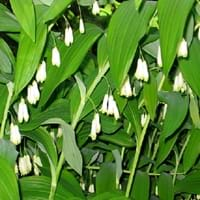Life Span
Annual
Biennial
Type
Bulb or Corm or Tuber
Perennial
Origin
Eastern Europe, Southern Europe, Mediterranean, Turkey, Western Asia
Texas
Types
Mountain silverbell , Rosea
Not available
Number of Varieties
Not Available
Habitat
Floodplains, low mountains, Lower slopes, secondary forest
Forests, meadows, Pastures, Prairies, savannahs, Woodland edges
USDA Hardiness Zone
5-9
8-10
Sunset Zone
21,22
H1, 8, 9, 12, 13, 14, 15, 16, 17, 18, 19, 20, 21, 22, 23, 24
Habit
Clump-Forming
Upright/Erect
Flower Color
White
White, Lemon yellow, Light Pink
Flower Color Modifier
Bicolor
Bicolor
Fruit Color
Not Available
Tan
Leaf Color in Spring
Green
Green
Leaf Color in Summer
Light Green
Green
Leaf Color in Fall
Several shades of Green
Not Available
Leaf Color in Winter
Light Green
Light Green
Leaf Shape
Acuminate
Alternate
Plant Season
Spring
Spring, Summer
Sunlight
Full Sun, Partial Sun, Partial shade
Full Sun, Partial Sun
Type of Soil
Not Available
Loam, Sand
The pH of Soil
Not Available
Neutral, Alkaline
Soil Drainage
Well drained
Well drained
Bloom Time
Spring, Late Spring
Early Spring, Spring, Late Spring, Early Summer, Late Winter
Tolerances
Drought
Drought
Where to Plant?
Ground
Container, Ground, Pot
How to Plant?
Layering, Seedlings, Stem Cutting
Seedlings
Plant Maintenance
Medium
Medium
Watering Requirements
occasional watering once established
Average Water Needs, Do Not over Water, Keep the Soil well drained, Requires regular watering
In Summer
Lots of watering
Lots of watering
In Spring
Moderate
Moderate
In Winter
Average Water
Average Water
Soil pH
Not Available
Neutral, Alkaline
Soil Type
Not Available
Loam, Sand
Soil Drainage Capacity
Well drained
Well drained
Sun Exposure
Full Sun, Partial Sun, Partial shade
Full Sun, Partial Sun
Pruning
Prune grass to maintain level, Remove damaged leaves, Remove dead branches, Remove dead leaves
Remove damaged leaves, Remove dead branches, Remove dead leaves
Fertilizers
All-Purpose Liquid Fertilizer
All-Purpose Liquid Fertilizer
Pests and Diseases
Pests and diseases free
Pests and diseases free, Red blotch
Plant Tolerance
Drought and Salt
Drought
Flower Petal Number
Single
Single
Foliage Texture
Medium
Medium
Foliage Sheen
Glossy
Matte
Invasive
Sometimes
Sometimes
Attracts
Bees, Flying insects
Bugs, Butterflies, Insects
Allergy
Unknown
Abdominal pain, Anxiety, Inflammation, Low blood pressure
Aesthetic Uses
along a porch, deck or patio, Beautification, Cottage Garden, Showy Purposes, Wild gardens
Beautification, Decorating walls, Hanging Basket, Showy Purposes, Used as an interior landscaping species, Used for decorating walls, fences, gates, hedges, etc.
Beauty Benefits
Not Available
Skin irritation, Skin Problems
Environmental Uses
Air purification
Air purification
Medicinal Uses
Unknown
Eczema, Menstrual Cramps, Menstrual Disorders
Part of Plant Used
Not Available
Flowers, Root, Seeds, Stem
Other Uses
Decoration Purposes
Beneficial species for attracting pollinators, deer resistant, Edible seed
Used As Indoor Plant
No
Yes
Used As Outdoor Plant
Yes
Yes
Garden Design
Container, Cutflower, Mixed Border, Rock Garden / Wall
Mixed Border, Rock Garden, Wall, Wildflower
Botanical Name
ORNITHOGALUM nutans
OENOTHERA mexicana
Common Name
Drooping Star-of-Bethlehem, Nodding Star-of-Bethlehem, Silver Bells
pinkladies, pink evening primrose, showy evening primrose, Mexican primrose, and amapola.
In Hindi
Silver bells
Mexican primrose
In German
Silver bells
Rosa Nachtkerze
In French
Silver bells
Mexican primrose
In Spanish
Silver bells
Primrose mexicana
In Greek
Silver bells
Μεξικού Primrose
In Portuguese
Silver bells
Mexican Primrose
In Polish
Silver bells
Mexican Primrose
In Latin
Silver bells
Mexicanus Primrose
Phylum
Angiosperms
Tracheophyta
Class
Magnoliopsida
Magnoliopsida
Family
Asparagaceae
Onagraceae
Clade
Eudicots
Angiosperms, Eudicots, Rosids
Tribe
Not Available
Onagreae
Subfamily
Not Available
Onagroideae
Season and Care of Silver Bells and Mexican primrose
Season and care of Silver Bells and Mexican primrose is important to know. While considering everything about Silver Bells and Mexican primrose Care, growing season is an essential factor. Silver Bells season is Spring and Mexican primrose season is Spring. The type of soil for Silver Bells is Not Available and for Mexican primrose is Loam, Sand while the PH of soil for Silver Bells is Not Available and for Mexican primrose is Neutral, Alkaline.
Silver Bells and Mexican primrose Physical Information
Silver Bells and Mexican primrose physical information is very important for comparison. Silver Bells height is 25.40 cm and width 30.50 cm whereas Mexican primrose height is 15.20 cm and width 25.40 cm. The color specification of Silver Bells and Mexican primrose are as follows:
Silver Bells flower color: White
Silver Bells leaf color: Green
Mexican primrose flower color: White, Lemon yellow and Light Pink
- Mexican primrose leaf color: Green
Care of Silver Bells and Mexican primrose
Care of Silver Bells and Mexican primrose include pruning, fertilizers, watering etc. Silver Bells pruning is done Prune grass to maintain level, Remove damaged leaves, Remove dead branches and Remove dead leaves and Mexican primrose pruning is done Remove damaged leaves, Remove dead branches and Remove dead leaves. In summer Silver Bells needs Lots of watering and in winter, it needs Average Water. Whereas, in summer Mexican primrose needs Lots of watering and in winter, it needs Average Water.





